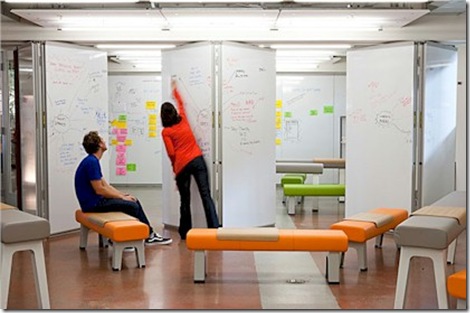One of the core objectives of Dynamic Work is to reduce expensive office space. This objective is not because ‘offices’ are inherently ‘bad’…just expensive and often ineffectively used. A simple way to reduce both is to simply get rid of the offices. But the fact remains that ‘office space’ is actually a useful business tool for some critical business functions. The most prominent of which is collaboration. People come to the office not to do email, not to work on spreadsheets, not to write copy, not to cut code. People come to the office to work with other people.
The office is a central meeting ground for staff and team members to come together for joint effort. The issue often becomes ‘if collaboration is the main purpose for paying for expensive office space, then why is that space configured so poorly for collaboration.’ Most office space is designed as a desk/employee parking lot with rows upon row of individual (not group) work spaces. The primary ‘collaboration’ resource is florescent-lit cookie-cutter conference rooms with a great big table in the centre creating a great, big separation between everyone in the room.
One of the areas that Dynamic Work focuses on, often in collaboration with its design partner Wheeler Kanik, is how to enhance the utility of the office space you do choose to use. A great piece on the potential a truly effective space can have is illustrated in FastCompany’s recent piece ‘11 Ways You Can Make Your Space as Collaborative as the Stanford d.school” (thanks Tessy).
